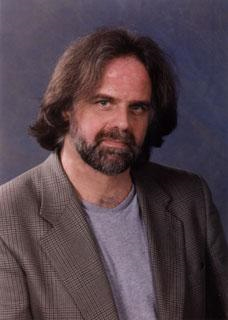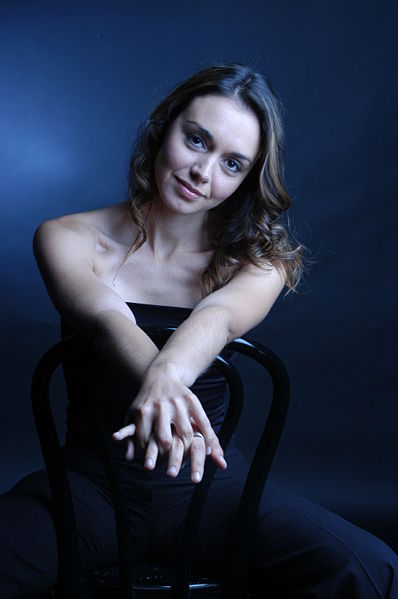Sleeper’s chamber works show depth, wide variety at UM

Thomas Sleeper
Thomas Sleeper has long been a dynamic presence on the faculty of the University of Miami’s Frost School of Music. He has often galvanized the young musicians of the Frost Symphony Orchestra to a remarkable level of performance. Sleeper is also a gifted composer, and Wednesday night the university presented a program of his works at Gusman Concert Hall that spanned from the 1980s to his most recent creations.
Sleeper’s early works are darker and more angst ridden while the newer pieces voice a sense of optimism. All of the works on the program were stylistically eclectic, perhaps reflecting the influence of Sleeper’s broad conducting repertoire. Every score received excellent, well rehearsed performances that allowed Sleeper’s music to be heard at its best.
Among the early scores, the second movement Gretchen (after the heroine of Goethe’s Faust) from his Concerto for Piano and Winds (1984) was particularly impressive. Scored for piano and pitched percussion, the score expresses deep, inner emotional turmoil. Beginning softly, the piano line builds to an angry climax, then returns to the initial quiet. The magical ringing soundscape supporting the piano is both unique and memorable. Zoe Zeniodi brought considerable intensity to the difficult solo role. Leading from the celesta, Sleeper elicited wonderful timbres from the percussion battery.

Zoe Zeniodi
Zeniodi also gave a beautifully articulated reading of Four Quartets (1980) based on T.S. Eliot’s poetic reflections on time. The keyboard writing of both Satie and Bartok seem to propel Burnt Norton while a flowing, impressionistic voice sings in Little Gidding. Zeniodi’s wonderful array of colors infused the sometimes austere score.
Xandre (1981), a solo flute work, proved a dazzling showcase for Eduardo Martinez, a highly talented Frost student. The long-breathed line of Debussy’s Syrinx inflects the opening Giocoso estatico. An aura of moody sadness seems to stop time in the quiet second movement before the jazz inflected Veloce brings the suite to a breezy conclusion. Martinez’s lovely tone and brilliant triple tonguing suggest he may have a major flute virtuoso career.
Sleeper’s creative voice seems to have gained new vibrancy in the twenty-first century. His exuberant Concerto for Alto Saxophone (2010) was written for faculty dynamo Dale Underwood, a master of the instrument. Marked Feroce! the concerto’s opening movement is both spiky and fast. An evocative night music a la Bartok with a bluesy twist was a powerful demonstration of Underwood’s lyrical powers.
After a haunting introduction, the bright, jazzy Allegro molto ignites full force with a songful interlude seamlessly evolving. Set against the jittery, bright timbres of the ten-member instrumental ensemble, this work skillfully adapts the hard-edged astringency of Stravinsky’s neo-classicism to a strongly personal voice. Underwood made the saxophone sing as well as blaze. His remarkable breath control and flexibility took wing in this important addition to the classical saxophone repertoire. Zeniodi conducted the excellent ENSEMBLE 21, skillfully weaving the hard driving orchestral textures to Underwood’s dominant solo strophes.
Seven Miniatures for violin and piano (2005) were composed for violinist Huifang Chen, a veteran South Florida musician and, now, educator. These engaging vignettes are idiomatically conceived for the instrument. A nocturne sings with an endless flow of melody in the manner of Samuel Barber. The finale Ethonis is a fiery tour de force. Chen’s fine technique, wide rubato and rapid articulation were well displayed in these pieces.
Through a Glass Darkly (2011), a song cycle based on poems by Giordano Bruno, finds Sleeper at his most inspired. A sensuous instrumental palette stirs beneath a soaring vocal line in a wordless arioso reminiscent of Canteloube or Villa-Lobos. The third song in the cycle is darker, the music fading to silence in a memorable, gripping conclusion.
Greek soprano Irini Kyriakidou was the silvery-voiced soloist. Like Dawn Upshaw, Kyriakidou brings the most subtle shadings to the vocal text, her resonant lower register impressive in the score’s rhapsodic ecstasy . Concertmaster Scott Flavin’s exquisite violin solo glistened with the eight-member ensemble under Zeniodi offering stalwart support.
Posted in Performances
4 Responses to “Sleeper’s chamber works show depth, wide variety at UM”
Leave a Comment
Thu Feb 24, 2011
at 11:10 am
4 Comments
Posted Feb 24, 2011 at 9:11 pm by STS
This concert was sublime: music rich with the elemental, from deep, primal renderings, to esoteric and introspective meditations – With exquisitely nuanced performances to match, by the ensemble and each of the soloists. I was, and remain, very moved by all.
Posted Feb 24, 2011 at 9:55 pm by Robert Lloyd
Mr. Budmen’s comments are spot on. These particular Sleeper compositions are not for the casual listener seeking crashing symbols and easy drama but for listeners willing to go deep into subtle tones surrounded by emotional flares and arcs performed by the great musicians assembled by Sleeper.
The musicians and vocalist performed with great feeling, and we joined in the encore applause at the end. It’s great to have such wonderful talent on display at UM right here in our community!
Posted Feb 25, 2011 at 9:42 am by Paul Jacobs
This is a real inspiration for my beginner saxophone students in the UK. Thanks for the great review.
Posted Feb 25, 2011 at 1:43 pm by Frankie Hipp
Dear Thom,
What a beautiful review. Bill and I are so very proud of you.